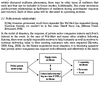 …well not really, but Geographic Information Systems and Cartographic Modeling by Dana Tomlin sparked the scientific interest in it. The original concepts surrounding surface analysis date back to late 1970s and were championed by Dana Tomlin with his PhD dissertation in 1983, which was later published as this book. In the book, Tomlin introduces map algebra operators based on how a computer algorithm obtains data values for processing raster surfaces. He identifies three fundamental classes: local, focal and zonal functions. Tomlin is a must to any academic student of GIS, since much or nearly all work on raster GIS springs off from Tomlin’s work. The illustrations clearly show that this is an old book, but the knowlegde still remains as brilliant today as it was then. This is a book you want to own, simply because it is very sought after and constantly unavailable from your university library.
…well not really, but Geographic Information Systems and Cartographic Modeling by Dana Tomlin sparked the scientific interest in it. The original concepts surrounding surface analysis date back to late 1970s and were championed by Dana Tomlin with his PhD dissertation in 1983, which was later published as this book. In the book, Tomlin introduces map algebra operators based on how a computer algorithm obtains data values for processing raster surfaces. He identifies three fundamental classes: local, focal and zonal functions. Tomlin is a must to any academic student of GIS, since much or nearly all work on raster GIS springs off from Tomlin’s work. The illustrations clearly show that this is an old book, but the knowlegde still remains as brilliant today as it was then. This is a book you want to own, simply because it is very sought after and constantly unavailable from your university library.
Network analysis in raster GIS
The thesis for my MSc in GIS — How to make a stright line square — is based on this book. Because network analysis and least cost paths have long been the dominion of vector GIS, I decided that it was time to explore the topic of network analysis in raster GIS, using MFworks as example software. MFworks is a GIS software which is 100% built on Tomlins algorithms.
In my thesis I explore the algorithms further, investigate procedures and network modelling techniques using raster GIS and discuss some common artefacts. I also propose an extension of Tomlin’s directional identifiers, allowing the modelling of non-planar features. I even built a tutorial for network or corridor analysis in raster GIS using MFworks.
In my post on corridor analysis I provide a short timeline on the development and history of network analysis in raster GIS.
Related
- husdal.com: How to make a straight line square
- husdal.com: Corridor Analysis – a timeline of evolutionary development
- husdal.com: MFworks Tutorial












